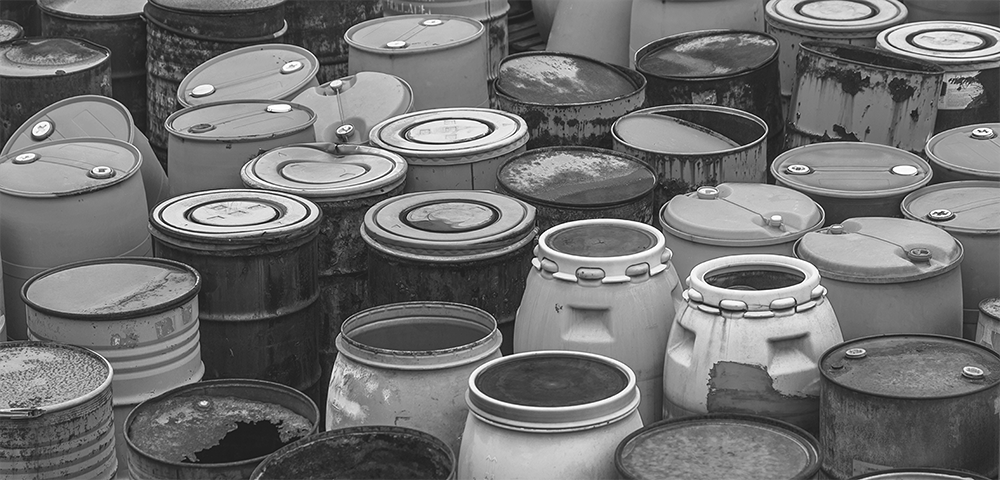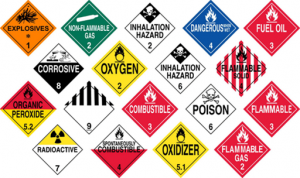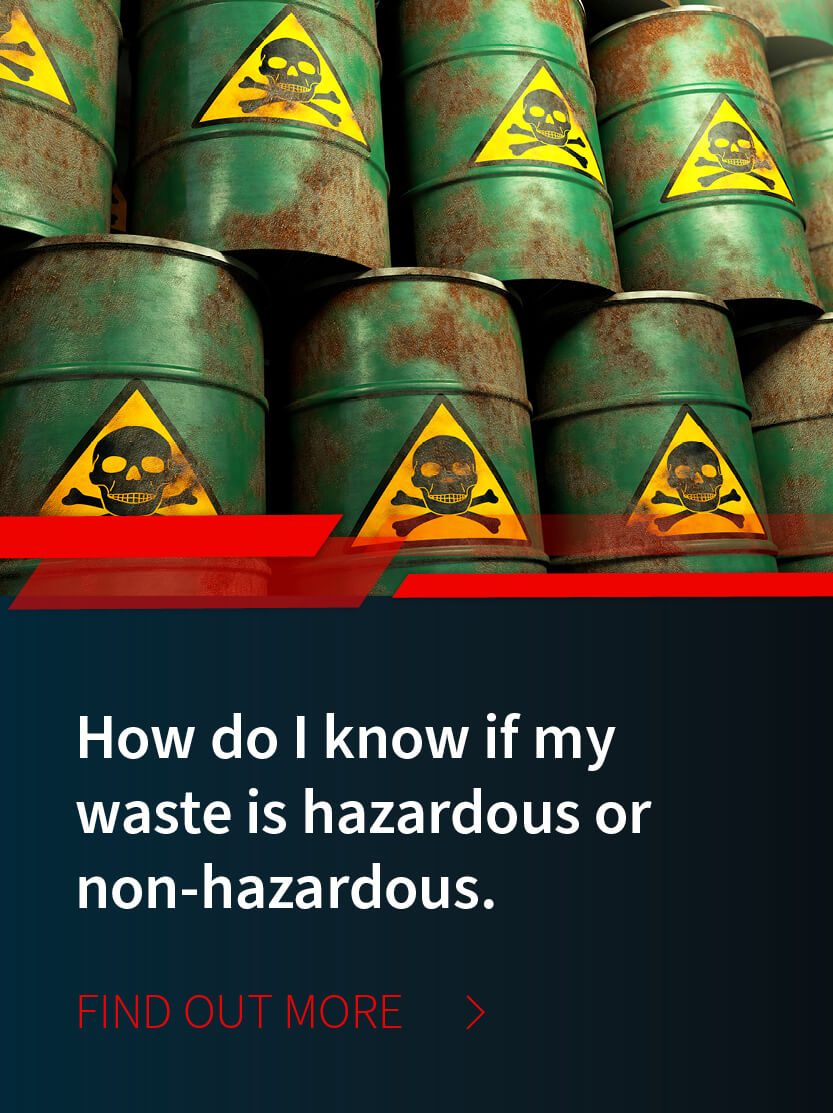
/ IN THIS BLOG
01 / Introduction to hazardous waste labeling
Hazardous waste containers must have proper labeling for storage (per the EPA) and transportation (per the DOT). And there are other interested state and federal agencies with a keen interest in how you label hazmat containers (e.g., the FAA).
This blog entry reviews basic labeling requirements within and across different agencies for transportation and storage of hazardous waste—particularly the EPA and DOT.
Note, however, that federal agency rules about hazmat tend to be prolific, changing, and open to different interpretations. So it’s important to get expert advice.
02 / Marking vs. labeling vs. placarding
- Marking requires descriptive names, identification numbers, instructions, cautions, weights, specifications, and/or other information (e.g., UN marks) to be prominent on the outside of a hazmat container.
Such marks must be durable, in English, displayed on a sharply contrasting background, unobscured by labels or attachments, and located away from any other marking (such as advertising) that could make it less visible. (§ 262.32) - Labeling uses specific colors, codes, and pictograms to
identify the hazards posed by the contents of a hazmat container.

Some typical “square-on-point” hazmat labels
Such labels must be printed or affixed to the package nearby the marking, preferably on the same surface if the container is large enough to do so. See DOT Chart 17.
Labels are always diamond-shape; and their size must adhere to international standards, measuring at least 4" x 4" (100 mm) on each side, square-on-point.The DOT uses nine categorical HazMat labels:
Explosives
Compressed gas
Flammable & combustible liquid
Flammable & reactive solids
Oxidizers & organic peroxides
Poisonous materials & infectios substances
Radioactive materials
Corrosives
Miscellaneous
- Placarding. Placards are larger versions of hazmat labels and must be displayed on all sides of the transporting vehicle. Per DOT regulations, a hazardous waste generator must provide appropriate placards to a properly licensed carrier for offsite disposal, treatment, or storage.
03 / Other labeling specifics relative to hazmat transportation
There are additional DOT labeling requirements for hazardous material removal to offsite disposal, storage, or treatment. Not only must the container be clearly labeled as hazmat, it must also prominently display this notice: HAZARDOUS WASTE—Federal Law Prohibits Improper Disposal. If found, contact the nearest police or public safety authority or the U.S. Environmental Protection Agency.
Additionally, the container must clearly show your company’s name, EPA identification number, and manifest tracking number; and there might be additional requirements for bulk-packaging containers.
04 / Some labeling specifics relative to hazmat storage
The EPA allows you to accumulate hazardous waste onsite and without a permit so long as you comply with federal law 40 CFR Part 262, Subpart C. Thereby, a hazmat storage container must be marked with the words “hazardous waste,” along with the starting date for its accumulation and info about its contents (i.e., toxic, reactive, ignitable, or corrosive).
If you’re reusing a container, make sure to remove old labels. And whether new or used, you must place appropriate labels on a container the very first moment that a hazardous waste is placed inside it. Otherwise you’re out of compliance.
To avoid visual confusion, all your personnel should be using the same labeling method (e.g., handwritten vs. printed forms). And each should have a clear understanding of what the labels mean—irrespective of whether he or she is directly involved with hazardous waste management.
Also bear in mind that labeling requirements differ depending on the amount of hazardous-waste you generate. In this regard, the EPA specifies two categories: Bulkpackaging (172.301) and Non-bulk packaging (172.302).
Loosely speaking, non-bulk packaging dictates a maximum capacity of 119 gal. for a liquid waste (450 L); a maximum of 882 lbs. for a solid waste (400 kg); or a water capacity of 1000 lbs. for a gaseous waste (454 kg). Thereby, bulk-packaging is anything that exceeds these quantities.
As in all things involving the EPA, expert advice is crucial.
05 / Summary
Part of your “cradle-to-grave” hazardous-waste responsibilities is ensuring that the transporter you select to remove waste from your site (to your preferred disposal, storage, or treatment facility) meets a myriad of DOT requirements.
These minimally include specific labeling and “marking” requirements, and there are strict rules governing the kinds of containers you can use.
While neither the EPA nor DOT specify a format for labeling hazardous waste containers, each requires specific information to be prominently displayed.
You’re free to use commercially-available printed labels that accommodate handwritten data—or any other means—so long as you’re consistent and include the required information.
06 / How to avoid trouble
Look for a hazardous waste management partner that handles all aspects of your hazardous waste disposal, managing the process from start to finish on your behalf—including profiling, manifesting, labeling, transportation, and disposal.
A comprehensive partner not only understands the nuances of each waste stream but greatly reduces the chances of accidental noncompliance.
For more information, contact us today. Or phone 866.315.8116
And thank you for reading our blog!
Robert Losurdo
President, COO








